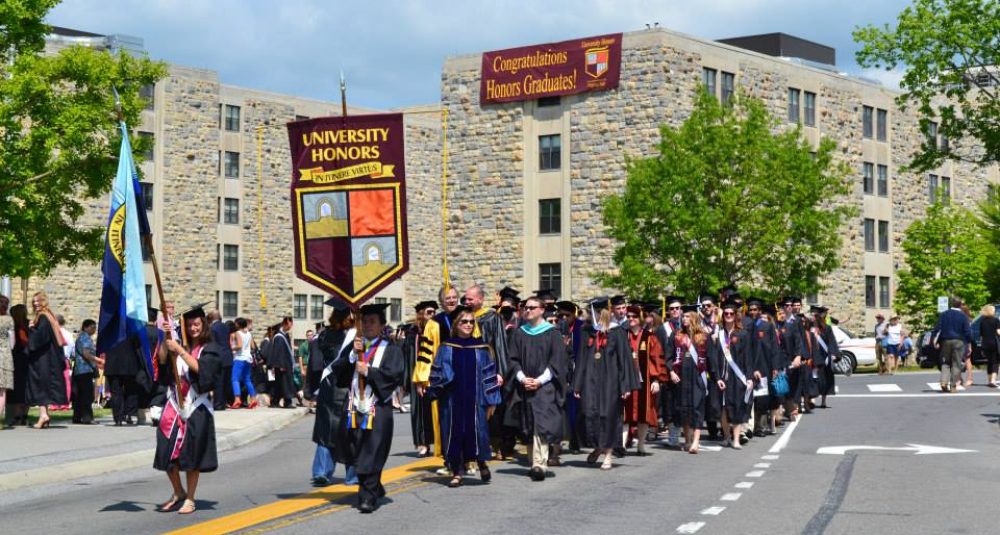The 2015 Forbes America’s Best Colleges rankings are out, and there is a new wrinkle in the methodology: The magazine “ran a targeted student satisfaction survey on Facebook. Respondents were asked where they attended school and how satisfied they were with their experience on a scale from 1 to 5.” The result yielded 2.5% of the total score, and was incorporated into the 25% subtotal in the “Student Satisfaction” metric.
We do not know exactly what “a targeted student satisfaction survey” is, but throwing something new into a ranking system helps to sustain interest. The survey didn’t help public universities overall. The average ranking of the public universities listed in the top 100 dropped more than 14 places in just two years. Only William & Mary rose during that time. Incredibly (literally), the Penn State ranking has fallen 59 places in two years; Maryland and Washington 20 and 21 places respectively. What could have happened in only two years to create such results?
For 2014, Forbes or, rather, the very conservative Center for College Affordability and Productivity (CCAP), which does the work for the magazine, increased the weight of the student debt factor from 17.5% to 25%. At the same time, the weight for “Academic Success” went down modestly, from 11.25% to 10%. Both of these probably hurt public universities: the debt, because state support still has not caught up with costs; the academic success because CCAP counts National Science Foundation Fellowships and Fulbright awards, many of which are won by students and faculty at public research universities.
(We have been and remain critical of the Forbes rankings, but at least they focus on outputs, however murky or dubious those may be. The do not use selectivity–an increasingly problematic U.S. News metric.)
In 2013, we wrote that the Forbes America’s Best Colleges rankings had suddenly become more friendly to public universities after several years of relegating many of them to the high three figures in the numerical rankings. In that year, 19 public universities (not counting the military academies) made it into the top 100; in 2014, that number dropped to only 14. This year 13 were among the top 100.
Although UC Berkeley, UVA, Michigan, and North Carolina all improved slightly in 2015, they are still, on average, more than 10 places below where they were only two years ago.
It is not unusual for anyone who ranks or evaluates colleges to make changes in their ranking methodologies. We have done the same for our curret edition of the Review, although we did not use numerical rankings this time around.
At least the bizarre rankings that marked the Forbes list for the first few years have mostly gone away. No longer do we see, for example, a university ranked 320th one year and rise to 168th the next. And it is good to keep in mind that the Forbes rankings lump all private and public universities and liberal arts colleges into one huge group; so a Forbes ranking of, say, 65 or 70 for a public university is a much stronger ranking than a U.S. News “national university ranking” in the same range.
Still, it is difficult to understand how some of the public universities could have dropped so far in just two or three years. The graduation rate value of 7.5% of the total, not adjusted for schools (e.g., Georgia Tech) with high numbers of engineering students, is punishing for some schools. Georgia Tech now has fallen 10 places since 2013, all the way down to 93.
Below are the Forbes rankings of public universities that were in the top 100 in 2013. The first parenthesis is the 2013 ranking, the second is the 2014 ranking, and the third is the 2015 ranking.
U.S. Military Academy— (7) (9) (11)
UC Berkeley— (22) (37) (35)
U.S. Naval Academy (28) (27) (27)
Virginia (29) (40) (36)
Michigan (30) (45) (41)
U.S. Air Force Academy (31) (34) (38)
UCLA (34) (44) (45)
UNC Chapel Hill (38) (50) (49)
William & Mary (44) (41) (39)
Illinois (53) (68) (68)
Washington (55) (73) (76)
UT Austin (66) (76) (82)
Wisconsin (68) (70) (69)
Maryland (73) (82) (93)
Florida (74) (87) (83)
Georgia Tech (83) (90) (93)
Georgia (90) (94) (102)
Penn State (93) (166) (152)
UC Santa Barbara (96) (116) (103)
Indiana (97) (107) (112)
UC Davis (99) (113) (121)

